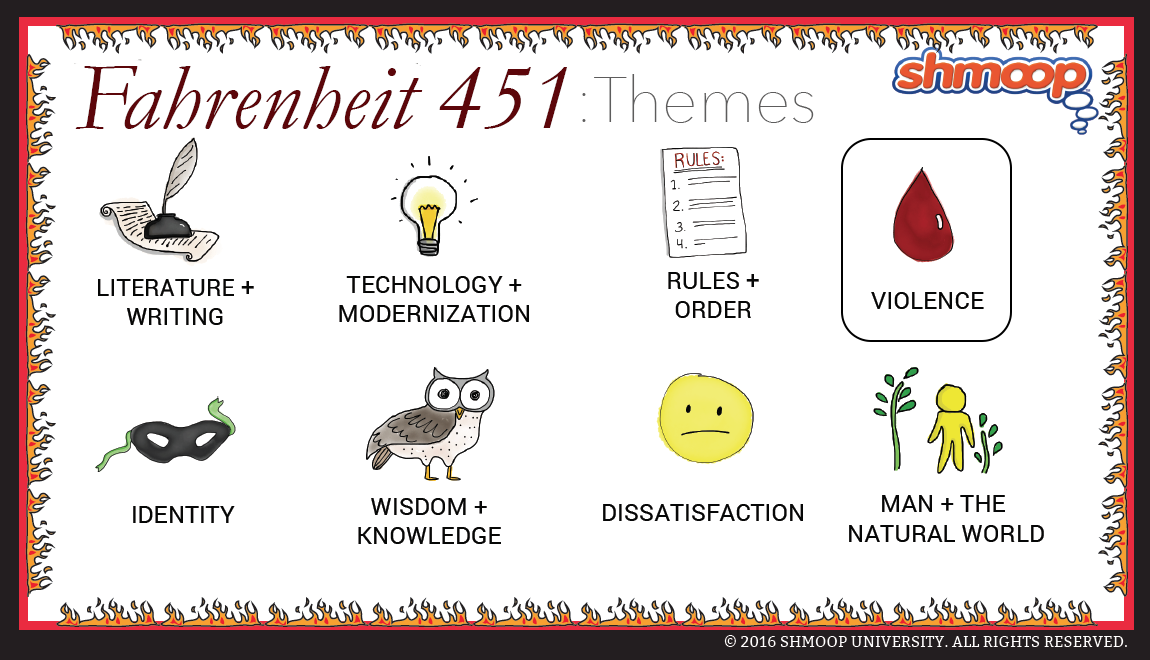 (Click the themes infographic to download.)
(Click the themes infographic to download.)
Excessive violence in the futuristic world of Fahrenheit 451 betrays a problematic underbelly to the status quo. Teenagers go around killing each other, TV is filled to the brim with violence, and even driving a car brings on the crazed thirst for speed and destruction.
Is it just us, or is this starting to sound like an episode of Nancy Grace?
In this book, violence is an outlet, and the cravings for such behavior mark the dissatisfaction of the general populous. Because, you know, violent outbursts are a totally reasonable reaction to feeling unfilled. This may be the future, but things certainly aren't as nice as The Jetsons wanted us to think they'd be.
Questions About Violence
- What types of violence do we find in Fahrenheit 451? Which is the most destructive?
- What is it about this world that renders everyone completely fascinated by violence?
- If life really is cyclic, as Montag believes at the end (a time for living, a time for dying, etc.), then isn’t destruction necessary? Does this justify the violence we see earlier in the novel? After all, if people were just writing books and no one was burning them, wouldn’t that throw off the scale, at least according to Montag’s final mantra?
- Did you notice that fire is repeatedly described as "beautiful" in Fahrenheit? What’s up with that?
Chew on This
Violence is a mask for fear in Fahrenheit 451.